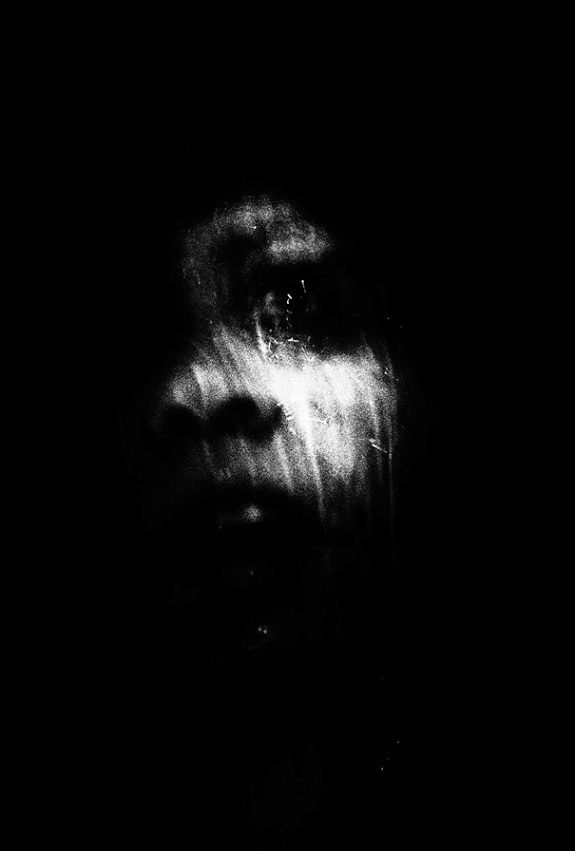Jul 05, 2025
Jul 05, 2025
Exemplified by the philosophy of the Indian philosopher Nagarjuna (2nd century CE) in comparison with the British philosopher Alfred North Whitehead (1861-1947).

“If, then, Socrates, we find ourselves in many points unable to make our discourse of the generation of gods and the universe unable in every way wholly consistent and exact, you must not be surprised. Nay, we must be well content, if we can provide an account not less likely than other’s; we must remember that I who speak and you who are my audience, are but men and should be satisfied to ask for no more than the likely story” (Plato, Timaeus).
Abstract.
By the 7th century a new form of Buddhism known as Tantrism had developed through the blend of Mahayana with popular folk belief and magic in northern India. Similar to Hindu Tantrism, which arose about the same time, Buddhist Tantrism differs from Mahayana in its strong emphasis on sacramental action. Also known as Vajrayana, the Diamond Vehicle, Tantrism is an esoteric tradition. Its initiation ceremonies involve entry into a mandala, a mystic circle or symbolic map of the spiritual universe. Also important in Tantrism is the use of mudras, or ritual gestures, and mantras, or sacred syllables, which are repeatedly chanted and used as a focus for meditation. Vajrayana became the dominant form of Buddhism in Tibet and was also transmitted through China to Japan, where it continues to be practiced by the Shingon sect.
This is the usual understanding of Tibetan Tantra. With a feeling of great dismay, I regret to say that this is an understanding without any foundation. This is nothing more than an exotic superstition when separated from its metaphysical foundations.
What Alfred North Whitehead tells us about Christianity can be transmitted with small changes to Buddhism. Whitehead says: "Christianity would long ago have sunk into a noxious superstition, apart from the Levantine and European intellectual movement, sustained from the very beginning until now. This intellectual movement is the effort of Reason to provide an accurate system of theology. Indeed, in outlying districts where this effort at rationalization died away, the religion has in fact sunk into the decrepitude of failure" (A.N.Whitehead, Adventures of Ideas, The Free Press Paperback Edition 1967, page 162).
In this short history in images I will present the Metaphysical Foundations of Tibetan Tantra. That is mainly the philosophy of the Indian philosopher Nagarjuna (2nd century CE) in comparison to the British philosopher Alfred North Whitehead (1861-1947).
[The end of the abstract]
1. Early Buddhist ideas of reality.
Reality is like a banana tree. Consider all things thus.

The tropical and subtropical palm like plant that bears bananas, having very large leaves but lacking a woody trunk. This is a common example in early Buddhism. We should consider all things thus. All things are without a solid core, they are substancelessness.
A fog
Reality is like a fog. Consider all things thus.

A fog is also a traditional allegory in early Buddhism. In a fog everything appears less real, more vague.
A reflection
Reality is like a reflection.

A reflection is not nothing, nor is it empty. It exists. There is a reflection in a mirror or in a lake. It just consists of light, it does not represent a doubling of the material reality, but pretends to be a doubling. It exists in an intermediate realm between nothing and material reality. It is like an appearance that is not itself. We see a cause by its effect. Above all, it is not tangible. It does not bind us to this world and we can rather liberate ourselves from our greed for something solid and durable. If we look at all things like a reflection, we can learn the letting go. That is why in early Buddhism the reflection was taught. Allegories had been important in early Buddhism.
Reality is like a (sunset) mirage. Consider all things thus. Buddha Sakyamuni
2. Nagarjuna
Nagarjuna (2nd century of Common Era) has not only expressed his ideas of reality in the terms of 'Sunyata' and 'Pratityasamutpada'. These two Sanskrit terms are in his main work [MMK] nothing but a summarizing generalization of 25 allegories with which he examined, depicted and compared reality. The terms sunyata and pratityasamutpada can be understood as collective terms for what lies between things. Sunyata and Pratityasamutpada can not be translated by a single word. The mainstream European philosophies have not been concerned with relations between things. They have gone completely different ways. Especially since Plato (428 - 348 B.C.), they have dealt with the extreme ideas of the absolute or substance, or since René Descartes (1596 - 1650), in the philosophy of the modern world, with the extreme opposite: the independent subject. Aristotle (384 - 322 B.C.) the probably most important and influential philosopher of ancient Greece besides Plato, had formulated a logical principle according to which a fact either exists or does not exist, tertium non datur, a third does not exist. It is a mode of thought in a black-and-white scheme without intermediate areas. It runs like a red thread through the history of European philosophy and science, from Aristotle to the present day.
At this point I would like to reject the black-and-white scheme with a 14 images representing the third: the intermediate state. Here I am using the example of day and night.

Black-and-white scheme. Photographer: Nassia Kapa, London
3. The evening in pictures
Why pictures? Just a few reasons: Pictures can contain a freshness that ideas cannot reach. Usually pictures are more comprehensive than individual ideas, they represent the never perceptible, not comprehensible whole of things. Since images go into the blood via the eyes, they offer a deeper certainty than ideas. An image cannot actually be translated into words without losing part of the visual experience. The words lack freshness, aesthetics, a concrete overall impression, diversity and versatility. What Hans Blumenberg tells us about metaphors is also important for images. He says: “The metaphor refreshes the mind; but it also needs to be refreshed by the mind”
(Hans Blumenberg, Quellen, Ströme, Eisberge, Suhrkamp Verlag 2012, p. 258)

The evening:
- The evening lies between day and night. It is a transition, an intermediate state.
- The evening connects day and night. It has no existence of its own, in part it is day, in part it is night.
- The evening, hanging between day and night, without any foundation.

The evening:
- "As for passion, it is proven for all things: Neither are they together, nor are they not together". (Nagarjuna MMK 6.10). This is also true for day and night. Neither are they together, nor are they not together.
- “Quantum entanglement is a very strange type of thing. It is somewhere between objects being separate and being in communication with each other” (Roger Penrose, The Large, the Small and the Human Mind, Cambridge University Press. 2000 page 66).
- Day and night are opposites. Day and night are opposites that seem to be completely mutually exclusive. Through the evening these opposites are connected to a unity. "People have chosen two forms of being and have named them firmly with two different expressions. With this they have of course committed a fundamental error, namely to separate the two figures instead of leaving them as one being" (Gadamer/Parmenides)

The evening
- The evening establishes a connection between day and night and a relationship between day and night.
- Day and night are neither together nor not together. The evening is between day and night. The evening is entangled with the day and with the night.
- "The mean between two or more things, theirs juncture, union, transit, passage, crossing, interval, distance, bond and contact – all these are mysterious, for they are rooted in the continuum, in the infinite".
(Vincenzo Gioberti, in: Paolo Zellini, A Brief History of Infinity, Published in Penguin Books, London 2005, p. 53).

The Evening
- "The mean is a union of two diverse and opposite things in a unity" (Vincenzo Gioberti, Ibid., p. 53).
- “A courageous scientific imagination was needed to realize fully that not the behaviour of bodies, but the behaviour of something between them, that is, the field, may be essential for ordering and understanding events” [...] “What impresses our senses as matter is really a great concentration of energy into a comparatively small space” ( Einstein, A. & Infeld, L. The Evolution of Physics. London: Cambridge University Press. 1938. pp. 257, 311/312.)
- “It follows that in every consideration of a single fact there is the suppressed presupposition of the environmental coordination requisite for its existence” (p. 9)
Two other keywords of Whitehead’s philosophy: Passage [movement from one place to another, change or progress from one process or condition to another, transition, a hall or corridor that is an entrance or exit or onto which several rooms open. Transition: a passing from one condition, form, stage, activity, place, etc. to another, the period of such passing, a word, phrase, sentence, or group of sentences that relates a preceding topic to a succeeding one or that smoothly, not crudely, connects parts of a speech or piece of writing. Webster's New World Dictionary. Adventures of Ideas, page 236].

The evening
- "Our usual inaccurate observation takes a group of phenomena as one and calls them fact: between him and another fact it imagines an empty space, it isolates every fact. In truth, however, all our action and recognition is not a consequence of facts and empty spaces, but a constant flow". (Nietzsche, WW IX 189)
- “The connexity of existence is of the essence of understanding” (Alfred North Whitehead, Modes of Thought, The Free Press New York 1966, p. 32).
4. Conclusion
Our study's conclusion confirmed our metaphysical assumption. We have seen 14 images where the black-and-white scheme of Aristotle not defensible. There is no separation but a transition between day and night. There is no independent day and no independent night and we might consider all things thus. Things are connected like the day and the night. They are not properly one and not properly two bodies. As Penrose has mentioned for quantum entanglement: “It is somewhere between objects being separate and being in communication with each other”. These ideas of reality are the metaphysical foundations of Tibetan Tantra. They give you the empowerment to become detached from the entanglement to this world. Separated from such a relational view the tantric ritual gestures and initiation ceremonies and mantras or sacred syllables are superstitions or hocus-pocus.
The aim of the faith when it is separated of a metaphysical foundation is to gain influence over all kind of power, to become a powerful person. It is pure worldly greed for power. In complete contrast, Buddhist philosophy wants to liberate us from any greed for power. Buddhist philosophy gives up any claim to power. It’s like fire and water. Fire and water are not compatible. Buddhist philosophy means liberation from power. Superstition and the Buddhist philosophy of liberation cannot be united.
In Early Buddhism, Buddha Sakyamuni was sometimes called a magician. But what is magic? The spectator is deceived, knows that he is deceived and is deceived nonetheless. Others who work with the means of deception - liars, charlatans, swindlers - fail under such conditions. Consequently, magicians are only actors who make it clear that they cannot actually perform magic, that they are merely experts in illusion, deception.
One aspect of power is to have power over other people. For example, a general has power over his own soldiers. He is the commander of whole armies and he decides over the life and death of his soldiers. This is pure worldly power that cannot be transferred to the Buddhist communities. Why not?
Because Buddhism is about detachment from our desire for power, not about strengthening the exercise of power. Exercising power in Buddhism cannot lead to liberation from power. Exercising power in Buddhism is pure superstition of decadent charlatans. It is a form of egoism and egoism is the greatest destroyer in the world. The Lord Buddha Sakyamuni was not a commander who decided over the life and death of his students. Not at all.
Without a philosophical foundation, the tantric faith is in danger of sinking into superstition and decaying like a house of cards. The direction and foundation of Buddhist philosophy is the liberation from our greed for power, profit and prestige.
One example: When one thinks of all the scandals that Tibetan Buddhism was involved in in the years 2015 to 2018 in North America the abuse of power by leading Tibetan teachers can give the impression of a kind of caricature or self-destruction. This abuse of power is based on a greed for power on the part of many Tibetan monks. Power and command over one's own students. These commanders have a power that cannot lead to liberation. No one can be liberated by the exercise of power. In Buddhist teaching, mainly in the Hevajra Tantra, greed for power is one of the main reasons for bondage to this world.
"Men are bound by the bondage of existence and are liberated by understanding the nature of existence." Hevajra Tantra
[Superstition: 1. any belief or attitude, based on fear or ignorance, that is inconsistent with the known laws of science or with what is generally considered in the particular society as true and rational; esp. such a belief in charms, omens, the supernatural, etc. 2. any action or practice based on such a belief or attitude. Hocus-pocus: meaningless words used as a formula by conjurers. Webster’s New World Dictionary]
07-Jan-2019
More by : Christian Thomas Kohl